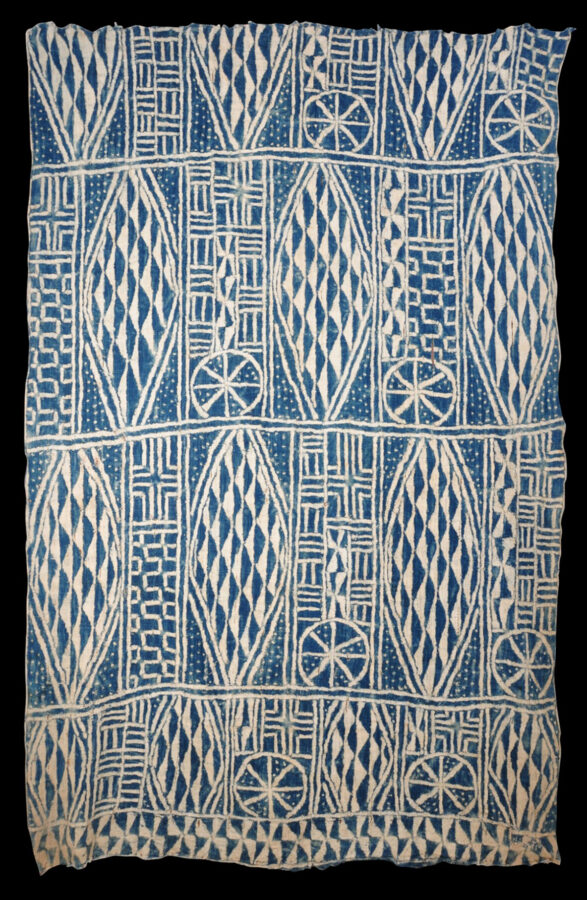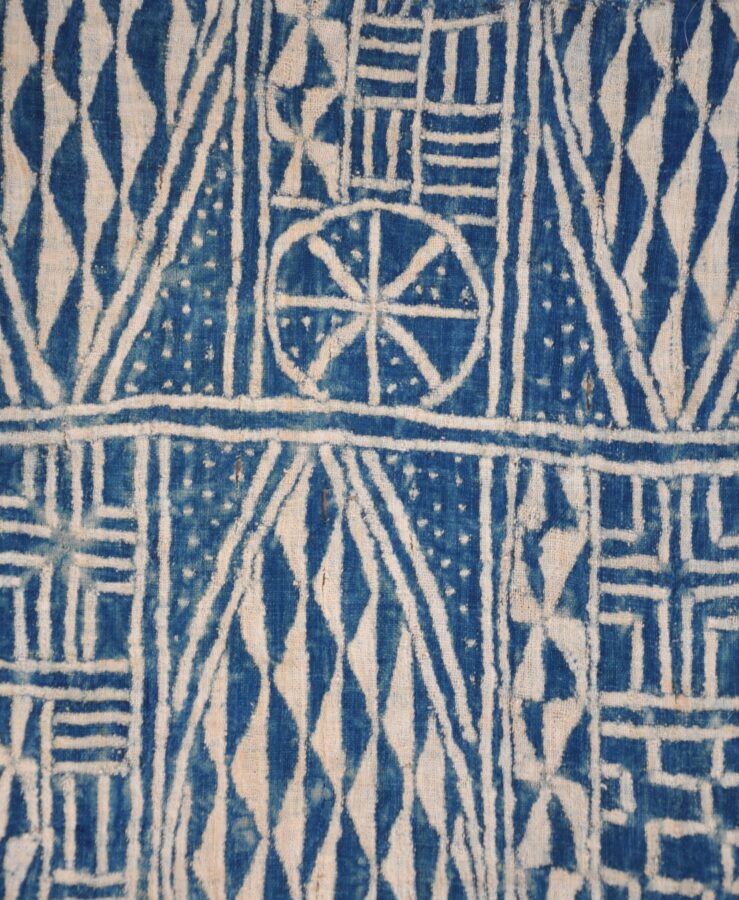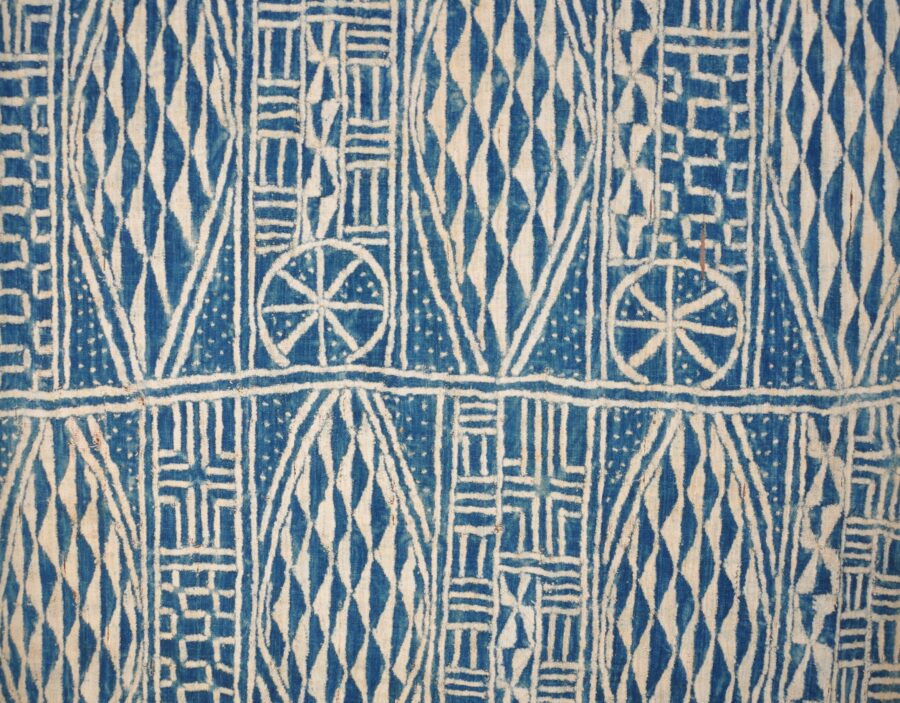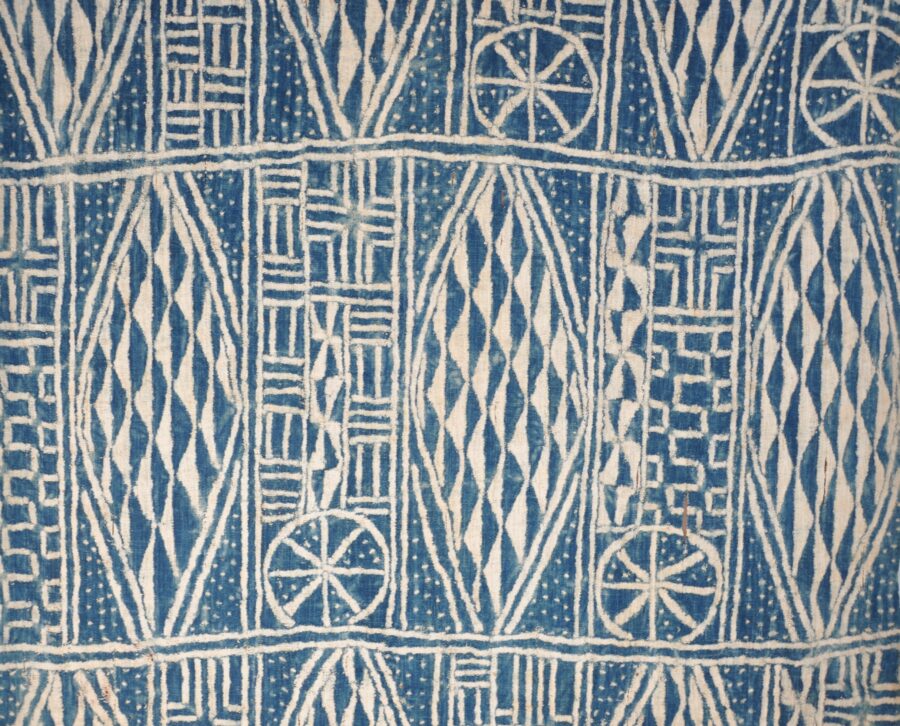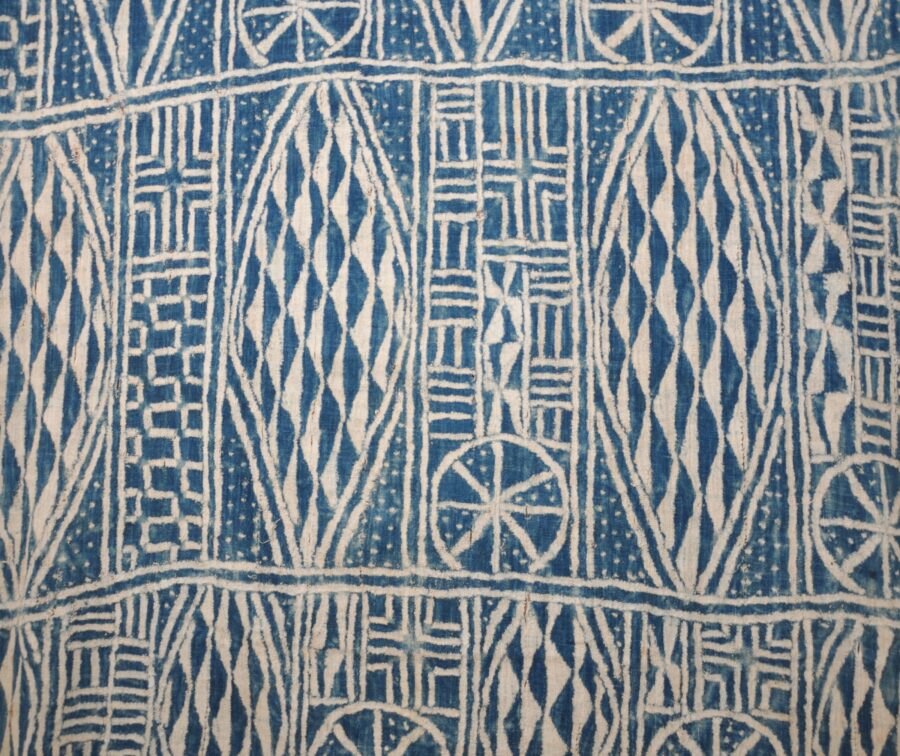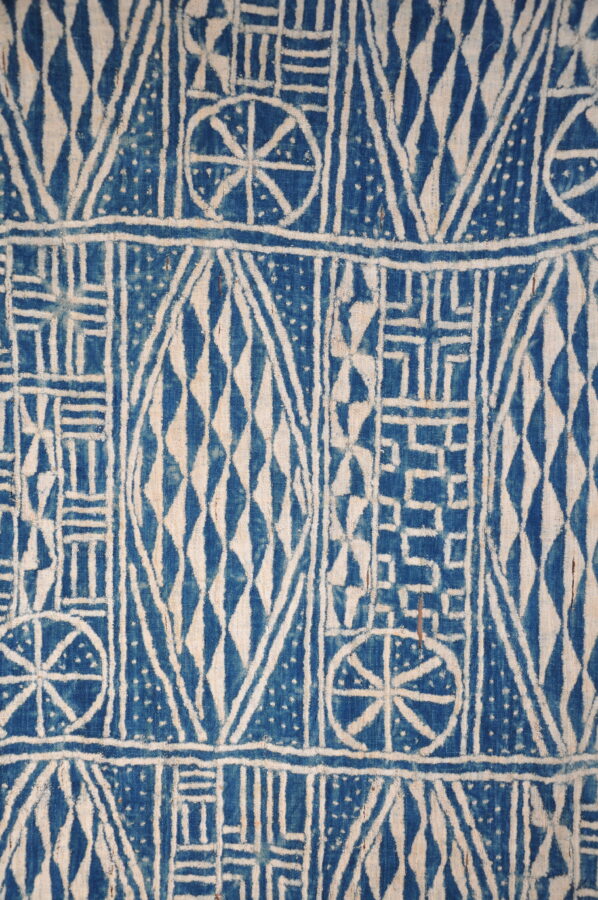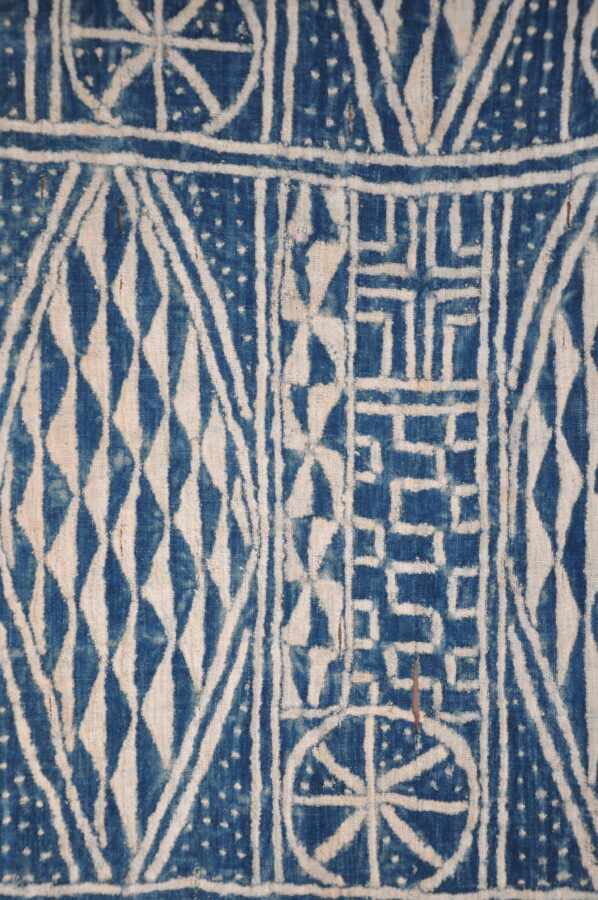Enquiry about object: 8946
Bamileke Resist-Dyed Ndop Textile
Bamileke People, Cameroon early 20th century
length: 155cm, width: 97cm
Provenance
UK art market
This splendid piece of resist-stitched, indigo-dyed cloth is known as ndop, and such cloths tell a remarkable story relating to trade within Africa.
Cloths such as this example was produced by the Bamileke people of the Cameroon grasslands. The example here comprises at least 19 narrow panels of strip-woven cotton cloth, most probably woven in the Garoua region, north of Cameroon from where it was brought south to the Bamileke villages where it was then stitched by Bamileke women into geometric resist designs using strong raffia thread. Thereafter, the cloth was taken back to Garoua where it was dyed indigo-blue in the dye-pits. Once dry, the cloth was transported back to the Bamileke who would unpick all the stitching to reveal the indigo-against-white background designs. The cloths were then used for a variety of purposes including as backdrops for ceremonies. (Gillow, 1995, p. 186).
The cloth also was exported to Nigeria for use there. And in Nigeria, similar versions were also made for local use (often with stylised animal motifs) and for export to the Bamileke.
The example here is particularly striking. There are few losses, and yet its age is obvious.
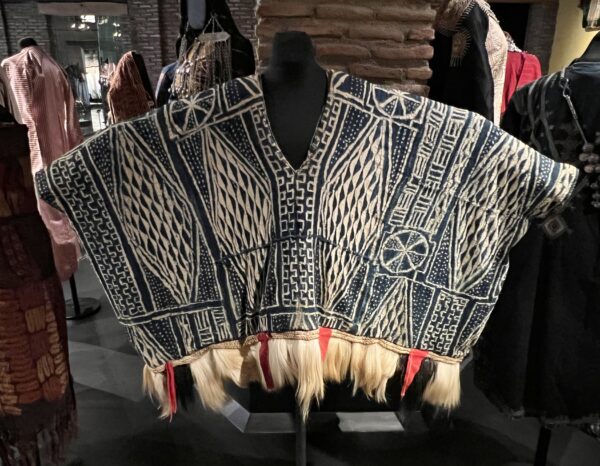
Above: An example of this type of cloth used to make a Bamileke dancer’s tunic, early 20th century. Photographed in the Monde des Arts de la Parure (Museum of the World of Adornment Arts), Marrakesh, Morocco.
References
Gillow, J., Traditional Indonesian Textiles, Thames & Hudson, 1995.


